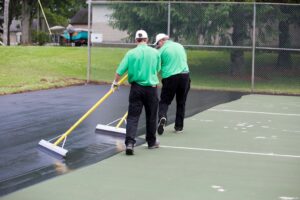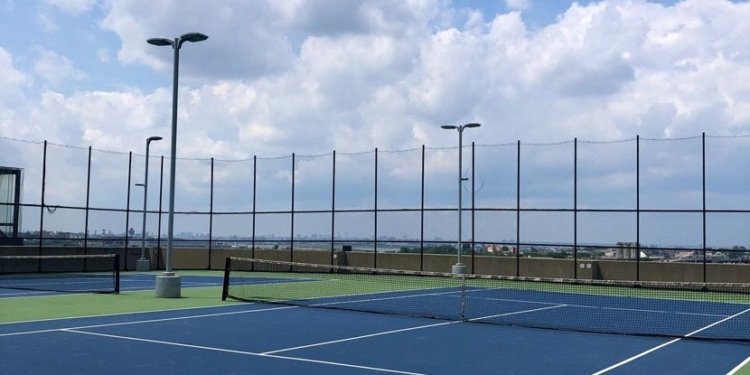How Much Does It Cost to Resurface a Tennis Court?
The cost of resurfacing a tennis court can vary significantly depending on the abovementioned factors. The average cost range for tennis court resurfacing falls between $5,000 and $15,000. This range is an approximation that can be higher or lower based on specific requirements and choices.
Factors Affecting the Cost of Tennis Court Resurfacing
The cost of resurfacing a tennis court can vary based on several factors. Understanding these factors can help you estimate the overall cost more accurately.
Court Size and Layout
The size and layout of the tennis court play a significant role in determining the resurfacing cost. Larger courts require more materials and labor, resulting in higher costs. Additionally, complex court layouts with irregular shapes or multiple playing surfaces may require additional time and effort, affecting the overall cost.

Court Condition
The condition of the existing court surface is another crucial factor in cost estimation. If the court has significant cracks, unevenness, or damage, it may require extensive repairs and preparations before resurfacing. Repairing these issues can increase the overall cost.
Surface Material
Different surface materials are available for tennis court resurfacing, each with its characteristics and cost implications. The choice of surface material depends on player preferences, desired playing speed, and budget. Common materials include acrylic, cushioned systems, and synthetic turf.
Repairs and Preparations
Before resurfacing can begin, repairs and preparations on the tennis court are often necessary. This may involve patching cracks, leveling the surface, and addressing underlying issues. These repair and preparation tasks can impact the overall cost of resurfacing.
Resurfacing Options
When it comes to tennis court resurfacing, there are several options available. Each option has its benefits and considerations. Here are three common resurfacing options:
Acrylic Resurfacing
Acrylic resurfacing is a popular choice for tennis court surfaces. It involves applying multiple coats of acrylic paint on the existing court surface. Acrylic resurfacing provides a durable and attractive finish that can withstand heavy use and withstand heavy use and varying weather conditions.
This option offers good traction and consistent ball bounce. Acrylic resurfacing is known for its vibrant colors, customization options, and relatively lower maintenance requirements than other options.
Cushioned Resurfacing
Cushioned resurfacing is preferred for players seeking additional comfort and shock absorption. This option involves installing a cushioned layer beneath the court surface, providing a softer and more forgiving playing experience.
Cushioned resurfacing is especially beneficial for players with joint issues or who prefer a more forgiving surface. However, it is important to note that cushioned resurfacing generally comes at a higher cost than acrylic resurfacing.
Synthetic Turf Resurfacing
Synthetic turf resurfacing is gaining popularity due to its low maintenance requirements and consistent playing characteristics. This option involves replacing the existing court surface with synthetic turf, providing a grass-like appearance and feel.
Synthetic turf resurfacing offers excellent durability, all-weather playability, and reduced maintenance costs associated with traditional grass courts. However, it is worth considering that synthetic turf resurfacing tends to have a higher upfront cost than other options.
Cost Breakdown
To understand the cost of resurfacing a tennis court, it is essential to break it down into different components. Here’s a breakdown of the costs involved:
Material Costs
The material costs include the surface material, such as acrylic paint, cushioned layer, or synthetic turf, and any additional materials required for repairs and preparations. The cost of materials can vary based on the chosen resurfacing option, court size, and specific requirements.
Labor Costs
Labor costs encompass the fees charged by professional contractors or resurfacing companies for their services. The labor costs depend on factors such as the complexity of the court layout, the extent of repairs and preparations needed, and the chosen resurfacing option. Obtaining multiple quotes from reputable professionals is advisable to ensure a fair price.

Additional Expenses
In addition to material and labor costs, additional expenses might be considered. These can include transportation costs for materials, equipment rentals, permits, and any other incidental expenses related to the resurfacing project. It’s important to consider these additional costs when estimating the overall budget.
Average Cost Range for Tennis Court Resurfacing
The cost of resurfacing a tennis court can vary significantly depending on the abovementioned factors. However, as a general guideline, the average cost range for tennis court resurfacing falls between $5,000 and $15,000. This range is an approximation that can be higher or lower based on specific requirements and choices.
It is worth noting that these figures represent the overall cost of resurfacing and include materials, labor, and additional expenses. To get a more accurate estimate for your specific situation, it is recommended to consult with resurfacing professionals who can provide a detailed quote based on your court’s conditions and your preferences.
DIY vs. Professional Resurfacing
Some tennis court owners might consider resurfacing their courts themselves to save money. While DIY resurfacing is possible, it requires expertise, specialized equipment, and considerable time and effort. Resurfacing a tennis court is a complex task that requires proper knowledge of surface preparation, material application, and finishing techniques. Mistakes in the resurfacing process can result in a subpar playing surface and potential long-term issues.
Professional resurfacing offers experience, expertise, and Access to quality materials and equipment. Skilled professionals can ensure a high-quality resurfacing job that meets industry standards and provides long-lasting results. Hiring professionals also saves you time and effort, allowing you to focus on other aspects of court maintenance and enjoyment without the stress of undertaking a major DIY project.
Factors to Consider When Hiring a Resurfacing Professional
When hiring a professional for tennis court resurfacing, it’s essential to consider certain factors to ensure you make the right choice. Here are some key considerations:
- Experience and Expertise: Look for resurfacing professionals with a proven track record and extensive experience in the industry. They should have the expertise to handle different courts and resurfacing options.
- Reputation and Reviews: Research the reputation of resurfacing professionals by reading customer reviews and testimonials. Positive feedback and satisfied customers indicate a reliable and trustworthy service provider.
- Portfolio and Samples: Ask for a portfolio of their previous projects or visit some of the tennis courts they have resurfaced. This will give you an idea of their artistry and the quality of their resurfacing jobs.
- Licensing and Insurance: Ensure that the resurfacing professional is licensed and insured. This protects you from liability in case of accidents or damages during the resurfacing process.
- Cost Estimates: Obtain detailed cost estimates from multiple professionals. Compare the prices, services, and warranties to make an informed decision.
- Communication and Professionalism: Choose a professional who communicates, listens to your requirements, and provides professional advice. Good communication ensures a smooth working relationship throughout the resurfacing project.
Maintenance and Longevity
After resurfacing a tennis court, proper maintenance is essential to preserve its longevity and performance. Regular cleaning, sweeping, and removal of debris helps prevent surface deterioration. It’s also important to address any minor repairs promptly to avoid larger issues.
Following the manufacturer’s guidelines for maintenance is crucial for different resurfacing options. For example, acrylic surfaces may require periodic re-coating to maintain durability and appearance. Cushioned surfaces may need occasional inspections to ensure the cushioning layer remains intact. Synthetic turf surfaces usually require routine brushing to maintain their playability.
By implementing a proactive maintenance routine and addressing any issues promptly, you can extend the lifespan of your resurfaced tennis court and ensure optimal playing conditions for years to come.
Conclusion
Resurfacing a tennis court is an investment in its longevity and performance. The resurfacing cost can vary based on court size, condition, chosen option, materials, labor, and additional expenses. It is advisable to consult with professionals to get accurate cost estimates and make an informed decision.
Hiring a resurfacing professional offers experience, expertise, and quality results. Consider factors such as experience, reputation, cost estimates, and communication when choosing a professional for your resurfacing project.
With proper maintenance and care, a resurfaced tennis court can provide a high-quality playing surface that enhances the tennis experience and ensures years of enjoyment for players.
FAQs
1. How often should a tennis court be resurfaced?
The frequency of resurfacing depends on various factors, including usage, climate, and maintenance. On average, a tennis court should be resurfaced every 4 to 8 years.
2. Can I resurface a tennis court myself?
Resurfacing a tennis court is a complex task that requires expertise and specialized equipment. While DIY resurfacing is possible, hiring professionals for the best results is recommended.
3. Does resurfacing a tennis court increase its lifespan?
Yes, resurfacing helps restore the playing surface and extends the lifespan of a tennis court by addressing issues like cracks, unevenness, and wear.
4. What is the difference between acrylic and cushioned resurfacing?
Acrylic resurfacing involves applying multiple coats of acrylic paint for a durable and vibrant finish. Cushioned resurfacing, on the other hand, includes installing a cushioned layer beneath the surface for added comfort and shock absorption.
5. Are there any eco-friendly resurfacing options available?
Yes, there are eco-friendly resurfacing options available. Some companies offer sustainable and environmentally friendly materials for tennis court resurfacing, such as recycled materials or water-based acrylic paints. These options help reduce the environmental impact of the resurfacing process.











